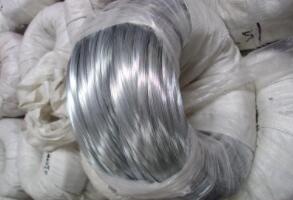The Cost of Barbed Wire Factors and Considerations
Barbed wire, a fencing material that has been used for over a century, remains a crucial component in agricultural, industrial, and residential settings. Its ability to deter animals and unauthorized entry makes it an essential element for many property owners. However, understanding the cost of barbed wire involves considering not just the material itself, but also a variety of factors including quality, installation, and maintenance.
Material and Quality
The cost of barbed wire varies significantly based on the type of material used. Typically, barbed wire is made from steel, and it may be either galvanized or coated with another protective layer to prevent rust and weathering. Galvanized wire is usually more expensive than plain wire due to its protective coating, which can extend the lifespan of the fence.
Moreover, the gauge of the wire also plays a vital role in its price. The wire is measured in gauge, with lower numbers indicating thicker wires. Thicker wire can withstand greater stress and is generally more durable, but it also comes at a higher price point. Therefore, when considering the overall cost, it is essential to balance quality with budget constraints.
Length and Style
The length of the barbed wire needed for a project also directly influences the overall cost. Barbed wire is commonly sold in rolls, typically ranging from 500 to 1,000 feet. The larger the fencing area, the more barbed wire will be required, leading to increased costs. Additionally, there are various styles of barbed wire, including single strand, double strand, and more elaborate designs. The choice of style can also affect pricing.
barbed wire cost

Installation Costs
Purchasing barbed wire is only one aspect of the total cost. Installation is another significant factor that must be taken into account. Those who opt for professional installation will incur labor costs on top of material expenses. Factors affecting installation costs include terrain, existing fencing, and accessibility. For instance, if the land is uneven or heavily wooded, more time and effort may be needed for installation, increasing labor costs.
Alternatively, many property owners may choose to install barbed wire themselves to save on costs. While this approach can be budget-friendly, it requires a certain level of skill and the right tools to ensure the job is done correctly. Anyone considering DIY installation should be aware of local regulations regarding fencing, as some areas have specific requirements for barbed wire fences.
Maintenance and Durability
While barbed wire is generally known for its durability, it does require some maintenance to ensure it lasts for many years. Factors such as weather conditions can influence how quickly barbed wire deteriorates. Areas with harsh climates may require more frequent inspections and repairs, leading to additional costs over time. Regularly checking for rust and ensuring that the wire is taut can prevent larger issues down the line, saving money in extensive replacements or repairs.
Conclusion
The cost of barbed wire encompasses a variety of factors including material quality, length, installation, and ongoing maintenance. While initial material costs may appear straightforward, additional expenses can accumulate quickly, depending on the specific requirements of a project. Property owners must carefully consider these elements to make informed choices that fit within their budget while still meeting their security and fencing needs. Ultimately, investing in quality materials and professional installation can save money in the long run by reducing maintenance and replacement costs, making barbed wire a wise investment for many applications.

















